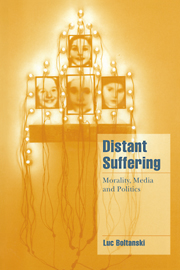1 - The politics of pity
Published online by Cambridge University Press: 22 September 2009
Summary
Pity and justice
In the second chapter of her essay On Revolution, ‘The Social Question’, Hannah Arendt takes up the idea that in contrast with the American Revolution, the French Revolution neglected the question of liberty and of the form of government able to guarantee it. It developed instead a politics of pity that, if its typical manifestations became apparent only with Robespierre and Saint-Just, had been in preparation since the mid eighteenth century, notably in the work of Rousseau. Her characterisation of this politics is based on specific features that can be summarised briefly. First of all, it involves a distinction between those who suffer and those who do not. As Max Scheler notes, we do not say that a father and mother who weep over the body of their child experience ‘pity’ for him or her precisely because they are themselves also suffering misfortune. Secondly, there is a focus on what is seen and on looking, that is, on the spectacle of suffering. What is meant by spectacle in this context? To a large extent Hannah Arendt's demonstration consists in drawing out the latent implications of a politics which is distinguished by not being centred directly on action, on the power of the strong over the weak, but on observation: observation of the unfortunate by those who do not share their suffering, who do not experience it directly and who, as such, may be regarded as fortunate or lucky people.
- Type
- Chapter
- Information
- Distant SufferingMorality, Media and Politics, pp. 3 - 19Publisher: Cambridge University PressPrint publication year: 1999
- 1
- Cited by



